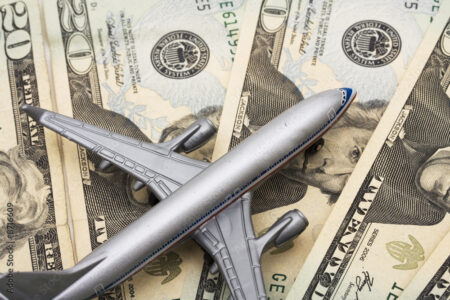Words by Keri Allen
Business Airport International investigates how airports, FBOs and charter services can improve their environmental credentials.
Headlines of forest fires and floods are keeping the environment at the top of the news agenda. It’s therefore little wonder that sustainability is growing in importance for aviation companies, which are regularly cited as key contributors to climate change.
The aviation industry accounts for around 2% of global man-made CO2 emissions and 12% of total transport related emissions, a contribution that is set to rise on the back of a projected 5% a year growth in air travel up to 2034. Environmental responsibility is becoming more important to both companies and their customers and conscientious businesses are therefore looking for different ways to operate more sustainably, whether in the air or on the ground.
According to figures from the European Business Aviation Association (EBAA), business aviation has already improved its carbon footprint by 40% over the last 40 years. But there is still work to be done. Industry initiatives such as the Business Aviation Commitment on Climate Change, aim to reduce emissions by 50% by 2050 relative to 2005. The larger scale International Civil Aviation Organization’s (ICAO) Carbon Offsetting and Reduction Scheme for International Aviation (CORSIA) also aims to mitigate emissions from international air travel that exceed 2020 levels.
“Carbon offsetting is one of several tools that can be used to reduce carbon emissions,” says Kurt Edwards, director general of the International Business Aviation Council (IBAC). “The industry is focused on a four-pillar strategy to address its carbon emissions – more efficient operations, new technologies, infrastructure modernization and market-based measures, of which carbon offsetting is one.
“The CORSIA will be the single, global carbon-offsetting measure to address international aviation’s carbon emissions. Combined with the other approaches, it will be an important tool in helping the global aviation industry meet its goal of carbon-neutral growth from 2020.”
Technical innovation

Aircraft manufacturers have played an important role in improving the sustainability of jets and turboprops through design innovation. For example, many of the Gulfstream’s aircraft were designed to decrease their environmental impact through establishing a balance of noise, emissions and fuel consumption while maintaining the speed, range, comfort and reliability required of business jets, says Charles Etter, technical fellow and head of environmental strategy and regulatory affairs at Gulfstream Aerospace.
“Structural optimization, system refinements, aerodynamic improvements and engine technology advances all contribute to environmental efficiency and the technology in the flight deck is a major contributor,” says Etter. “Also, our aircraft are designed and manufactured to have a very long life, which reduces waste and minimizes the use of resources used during an aircraft’s lifespan.”
Leading the way
Within business aviation, airports, FBOs and charter services are considering ways to become more environmentally friendly, including managing energy use better and reducing waste. This September, Farnborough Airport was awarded the Institute of Environmental Management and Assessment’s (IEMA) inaugural Energy and Carbon Transition Award for becoming the first business aviation airport in the world to achieve carbon-neutral status. This has been achieved through an investment of more than £1 million (US$1.3 million) into energy efficiency projects. The airport has reduced carbon emissions by 73% and offsets residual emissions through certified carbon offsetting projects.
Victor has been very vocal about business aviation’s role in reducing carbon emissions and this summer launched an action plan to become Europe’s most environmentally responsible private jet charter company by reducing fuel burn and adopting sustainable alternative fuels. It now offsets the carbon emissions of every flight by 200%, which over the next five years it expects to save almost 403,500 tonnes of CO2.
“We want to do more than just enough and inspire others to follow suit,” says Victor’s founder and CEO Clive Jackson. “It’s important for everyone to see those responsible for emissions doing everything in their power to address it, and our mission is to inspire with positive action.
“We’re also inviting our flyers to make a financial contribution to cleaning up the footprint associated with their flight. The funds raised go to UN-approved certified carbon offset programs,” he adds.
Systematic approach

Energy efficiency is key to improving sustainability and there are a number of steps airports, FBOs and charter services can take – some large undertakings, while others are easy wins.
Farnborough Airport’s environment manager Miles Thomas helped develop the airport’s sustainability masterplan. First the airport’s carbon footprint was calculated. They then began monitoring the emissions from the airport’s various systems to see where work was required most.
Some of the major projects included changing the airport vehicle fleet from diesel to electric, which also included installation of the necessary charging infrastructure. Farnborough Airport also installed 116 solar panels onto the roof of its main administrative building. “We looked at a range of renewable energy options over the years and solar came out best. The panels supply electricity directly to the building, reducing what we have to procure from the grid,” Thomas says.
One of the biggest projects, however, has been Farnborough Airport’s switch over to LED lighting. The airports offices, masts, hangars and more have all been converted to LED lights, which in some circumstances have led to more than 50% less energy draw. “Lighting projects are expensive, but they yield great savings. The payback comes in a short time so there’s a strong business case to do them as there’s financial and environmental savings thereon,” he says.
As well as large visible projects, many smaller jobs were also undertaken to improve energy efficiency. This ranged from identifying areas where heating pipes needed to be insulated, to installing switches and equipment that automatically turned off lights and heating systems. “They took a systematic approach,” says Martin Baxter, chief policy advisor at IEMA.
“They looked across the whole organization, at what was the source of emissions, measuring and monitoring them and then systematically improving them.”
There are also a number of ways to lower carbon emissions related to flights, such as optimizing flight plans and introducing more sustainable fuel.
Victor, for example, has been working with planning and trip support company RocketRoute to analyze and optimize its flight routes to lower fuel burn.
“We looked at routes flown across Europe and saw that potentially 8% or more of our flights could improve fuel efficiency,” says Jackson.
“There is no one silver bullet, but we have to be able to demonstrate to our fiercest critics that we’re doing everything possible to address the issue of carbon emissions in aviation.”
In addition, for those areas where emissions can’t be reduced any further, carbon offsetting has a role to play. This offsetting can be combined with local outreach. Farnborough Airport for example has worked with local schools to plant trees and install solar panels.
Meanwhile Victor offsets its carbon footprint mainly through nature-based projects including a reforestation program managed by BP Target Neutral, Vertis Environmental Finance and consultancy South Pole.
Next steps
The industry will continue to work towards meeting the goals set by existing initiatives and more initiatives will be announced – such as the EBAA’s Business Aviation Sustainability Roadmap. According to secretary-general of the EBAA Athar Husain Khan this will go beyond the current Business Aviation Commitment on Climate Change.
“The Roadmap will underscore the industry’s commitment and what is being achieved by all players in the business aviation value chain to reduce the environmental footprint of our sector, from manufacturers to passengers.
“We expect the Business Aviation Sustainability Roadmap to be ready sometime in early 2020 as an important step forward in our development of smart, inclusive and sustainable aviation policies,” he enthuses.
The latest generation of business aviation professionals, considered by many to be more environmentally aware than previous generations, are already starting to generate fresh ideas. The Standards and Training for Aviation Responsibility and Sustainability (STARS) program has been developed by young industry professionals who represented the EBAA at the 2018 and 2019 One Young World conferences. STARS aims to address societal and environmental issues through partnerships and the mobilization of industry-wide environmentally and socially responsible initiatives. Made up of a set of guidelines and a three-tier accreditation process, there are plans to roll out STARS in Europe in 2020, before seeking to form the basis of a global industry standard.





